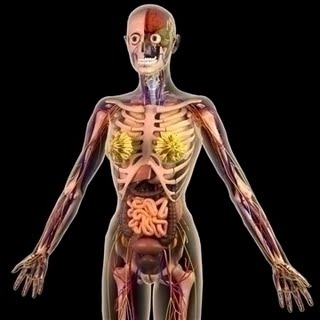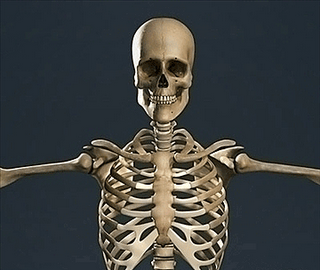Guide For Selecting Human Anatomy 3D Models
Representing the human anatomy with a digital 3d model can be daunting for many even experienced 3d modelers. These 3d models are used everyday to bring thousands of animations to life. They are also used to demonstrate the dynamics of breakthrough surgical procedures or to build instructional diagrams to educate health practitioners about a drug or medical device.
When looking to start off the 3d modeling process of the human anatomy, it is necessary to understand what organs of the body are the ones that can be obtained by using an existing stock 3d model.
Major Human Anatomy Systems In Stock 3D Models
A typical human anatomy digital 3d model contains one or all of the major systems, and if done properly will be organized accordingly, as follows:

- Musculo-skeletal: In other words these are the “muscles and skeletons” and everything else that allows us to move our bodies and also provides us with great protection and structural support for other soft tissue and organs. These include organs such as the bones, muscles, cartilage, ligaments, and tendons. Also, if you plan to rig the character or 3d model of people, it is important that you are familiar with the dynamics of movement and human locomotion especially the Musculo-skeletal system.
- Nervous: The Nervous system 3d models can be quite complex because of the inherent complexity of our Nervous system. It includes the network of nerves, the brain, and spinal cord. and they run throughout our whole body. The nerves and spinal cord collect, transfer and process information with the brain.
- Digestive: Our Digestive system has the important function of processing food for energy and removing waste from our bodies. The major organs that are involved in doing this include the stomach, esophagus, liver, gallbladder, pancreas, intestines, rectum and anus.
- Endocrine: Most of the 3d models that make up the Endocrine system will be grouped by glands and can include the hypothalamus, pituitary, pineal, thyroid, parathyroid, and adrenal glands, which allow important signals and communication within the body via hormones.
- Integumentary: Typically, the organs that comprise the integumentary system are not seen or thought of as “organs” even though they protect the body from damage. They include our skin (largest organ), our hair, and our nails.
- Lymphatic: Lymphatic organs include the spleen, appendix, tonsils, bone marrow, thymus, adenoids, lymph nodes, and Peyer’s patches. The Lymphatic system transfers lymph between tissues and the blood stream. A 3d human anatomy model will include some if not all of the organs that make up the lymphatic system, which are the body’s network of organs, ducts, and tissues that filter harmful substances out of the fluid that surrounds all of our body tissues.
- Urinary systems: Our urinary system includes all the organs, tubes, muscles, and nerves that work together to create the urine, store it, and carry it out of our bodies. The 3d model of the urinary system will include the two kidneys, two ureters, the bladder and the urethra, and the penis in males.
- Immune: Our Immune system plays a very important role in protecting us from disease. 3D Models help visualize this important function. This group includes 3d models of our lymphatic vessels, lymph nodes, tonsils, thymus, Peyer’s patch, and spleen. It performs this important function by identifying and killing pathogens that come in contact or enter our body or grow within our body, like tumor cells.
- Reproductive: Our Reproductive system allows us to procreate. The male reproductive organs that will make up a 3d model of a male will include the penis, testes, vas deferens, seminal vesicles, and the prostate. A female anatomy 3d model will include all of the major female reproductive organs such as the ovaries, fallopian tubes, uterus, and the vagina.
- Respiratory: Our Respiratory system includes the organs used for breathing, the pharynx, larynx, trachea, bronchi, lungs, and diaphragm. Human anatomy 3d models often group these together or break them up by sections of the body, like upper body organs and lower body organs.

If you go with a very detailed and realistic 3d model of the human anatomy, then you can expect several level of details, since the human anatomy is studied and displayed as such. Most likely your animation or visualization will not need every single detail, but rather a lot of detail on a particular area and just the silhouette for the rest of the human body.
Keep in mind that a stock or even a custom human anatomy 3d model can greatly enhance your 3d visualizations and animations while also saving you a lot of 3d modeling time and expense. Therefore, before going ahead with a particular 3d model it is best to always check the specifications and its description, ask questions, download the demos, check compatibility with other 3d modeling software, and so forth.
